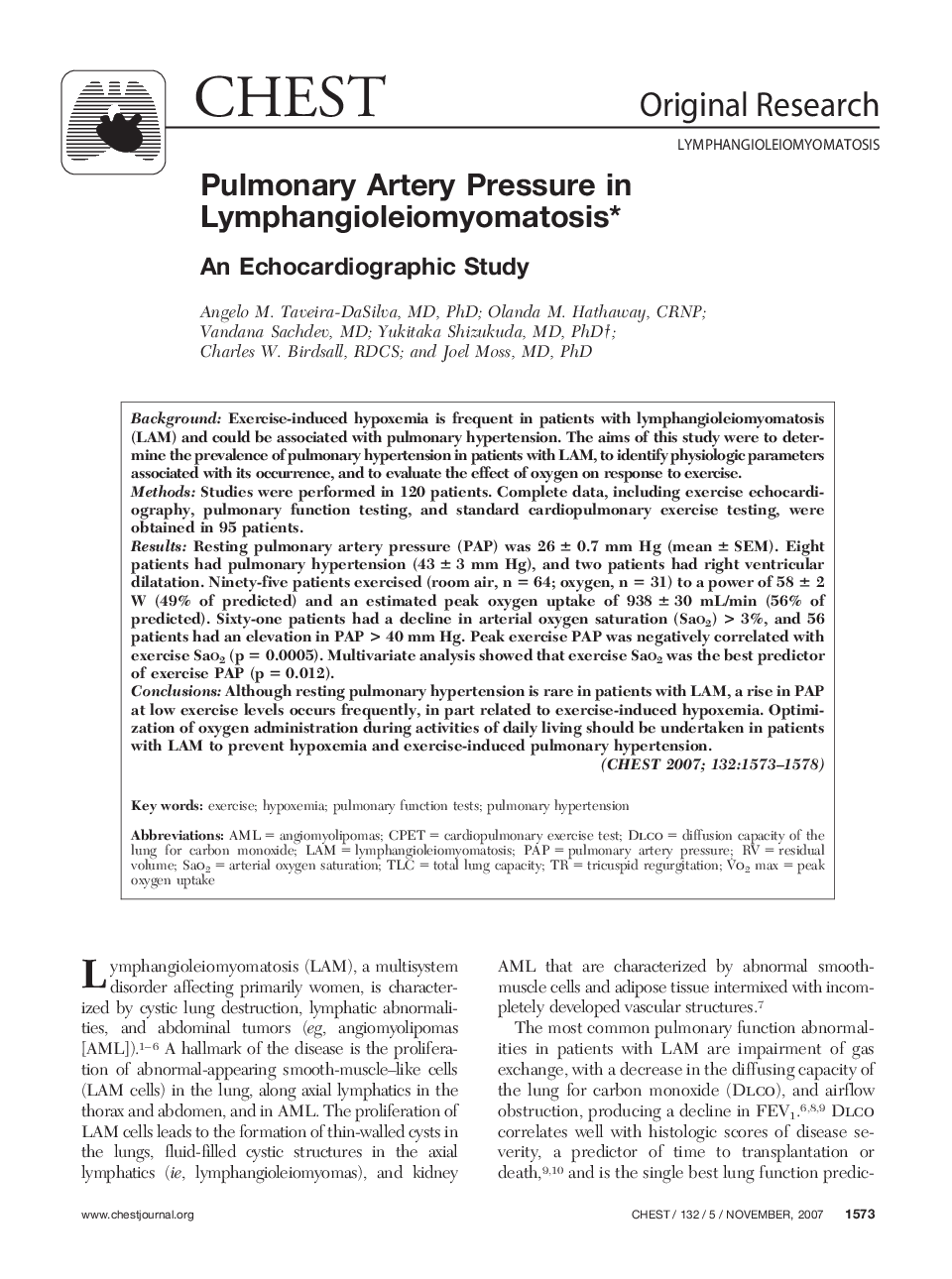| Article ID | Journal | Published Year | Pages | File Type |
|---|---|---|---|---|
| 2904434 | Chest | 2007 | 6 Pages |
BackgroundExercise-induced hypoxemia is frequent in patients with lymphangioleiomyomatosis (LAM) and could be associated with pulmonary hypertension. The aims of this study were to determine the prevalence of pulmonary hypertension in patients with LAM, to identify physiologic parameters associated with its occurrence, and to evaluate the effect of oxygen on response to exercise.MethodsStudies were performed in 120 patients. Complete data, including exercise echocardiography, pulmonary function testing, and standard cardiopulmonary exercise testing, were obtained in 95 patients.ResultsResting pulmonary artery pressure (PAP) was 26 ± 0.7 mm Hg (mean ± SEM). Eight patients had pulmonary hypertension (43 ± 3 mm Hg), and two patients had right ventricular dilatation. Ninety-five patients exercised (room air, n = 64; oxygen, n = 31) to a power of 58 ± 2 W (49% of predicted) and an estimated peak oxygen uptake of 938 ± 30 mL/min (56% of predicted). Sixty-one patients had a decline in arterial oxygen saturation (Sao2) > 3%, and 56 patients had an elevation in PAP > 40 mm Hg. Peak exercise PAP was negatively correlated with exercise Sao2 (p = 0.0005). Multivariate analysis showed that exercise Sao2 was the best predictor of exercise PAP (p = 0.012).ConclusionsAlthough resting pulmonary hypertension is rare in patients with LAM, a rise in PAP at low exercise levels occurs frequently, in part related to exercise-induced hypoxemia. Optimization of oxygen administration during activities of daily living should be undertaken in patients with LAM to prevent hypoxemia and exercise-induced pulmonary hypertension.
